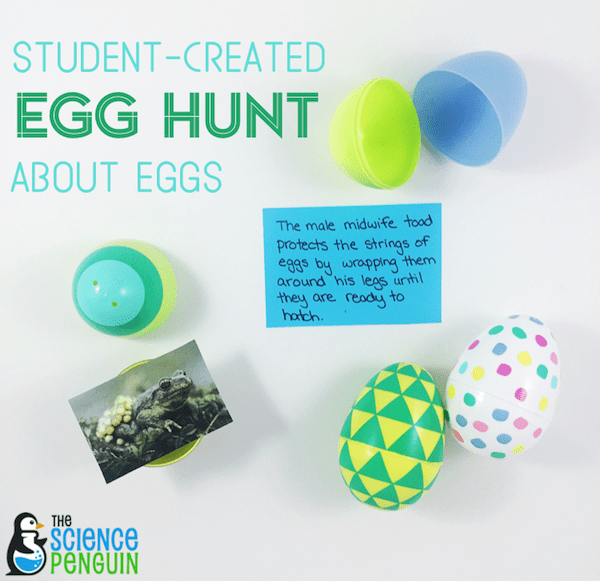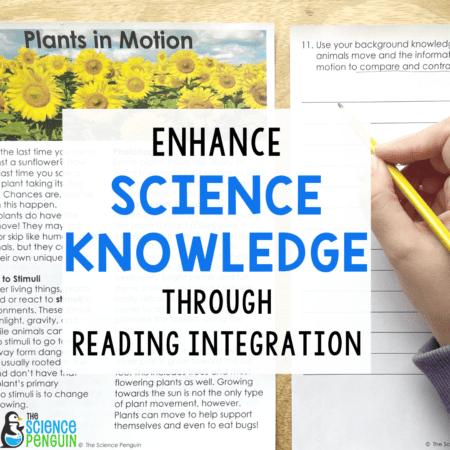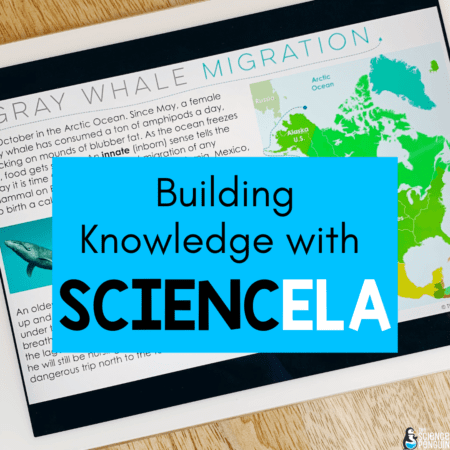Welcome! This is the sixth post in my blog series, Picture Book Science Lessons. Each post contains a favorite picture book for teaching science concepts and activities to accompany the book.
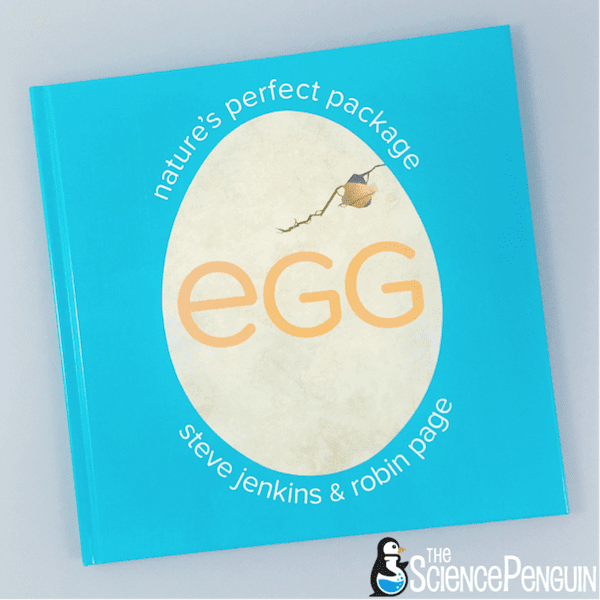
Topics: Life Cycles and Animals
Focus: I’m a big fan of Robin Page and Steve Jenkins’ work, so I was thrilled to see Egg, which was released last year. The text focuses on the unique behaviors of oviparous animals. Students will learn about the physical attributes of eggs, where animals lay their eggs and how many eggs they lay at a time, clever ways animals protect their eggs, how creatures carry and incubate their eggs, and how babies finally hatch. You and your students will love all the cool examples.
Informational Text Concepts: illustrations and captions, vocabulary, descriptive text
Title: Egg: Nature’s Perfect Package by Steve Jenkins & Robin Page (affiliate link)
Flapbook
After or while reading the text, students complete the flapbook with examples of animals that lay eggs, how animals protect their eggs, and any interesting behaviors animals have regarding their eggs (There are lots!).
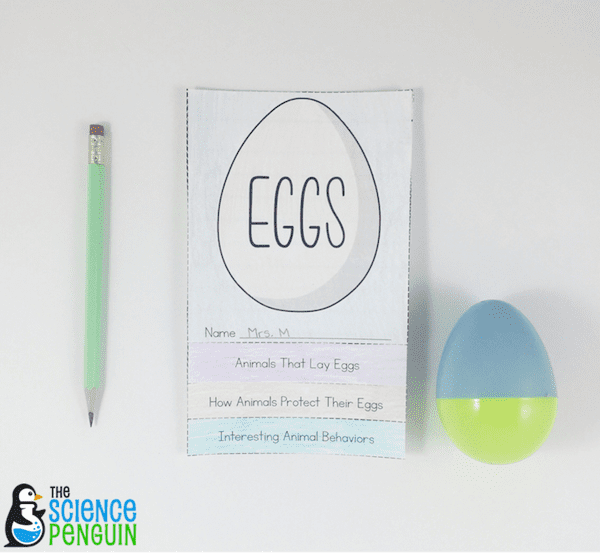
Subscribe to access the Eggs Flap Book.
Sign up for the Free Resource Library
This is an exclusive library of 40+ science printables, labs, activities, and games for grades 3-6. Sign up and check your email for immediate access.
Discussion Questions
After or during your read aloud, have a group discussion or mini-discussions in small groups.
- What groups of animals tend to lay eggs? Are there any exceptions?
- What do creatures who tend to lay only a few eggs have in common?
- What threats do eggs face?
- What behaviors help certain animals protect their eggs?
- What physical adaptations help certain animals protect their eggs?
Egg Research Egg Hunt
Have student teams each choose one of the creatures they learned about in the book. They research to learn more about the eggs, then set up and set up a fact egg hunt for the class. Each egg contains one fact. Here are some ideas for what to include in the eggs:
- How many eggs does the female typically lay at one time?
- Do the animals protect the egg? If so, how?
- What are the physical characteristics of the egg?
- Where does the animal lay its eggs?
- What do the eggs need to grow and develop?
- How long does it usually take the egg to hatch?
- A photograph of the egg
During the egg hunt, students take notes on the characteristics of each animal’s development as an egg, what the egg is like, and if and how eggs are protected. Then, compare and contrast the animals’ eggs.
Materials Needed: 5-7 medium Easter eggs per team, paper, internet access
